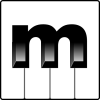I´am not (yet) a user and saw some of the tutorial videos.
Could be a very useful tool for me but there´s one thing that´s really important for me:
These so called 'chord rules' I´ve seen don´t include the church modes (dorian to locrian), so that means
I cannot (auto) generate chord progressions and phrases based on these scales ?
Thank you !




